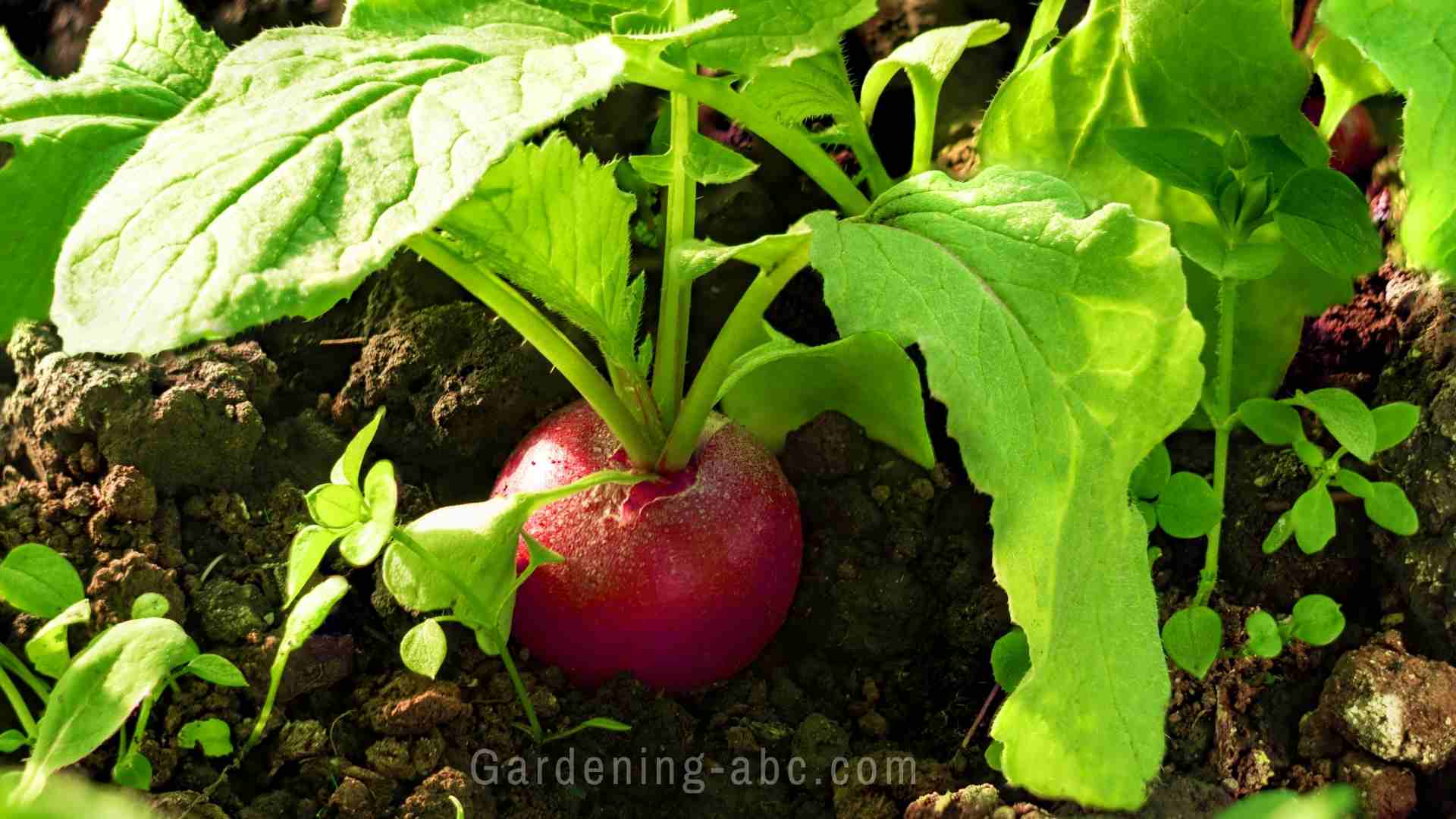We use affiliate links to run our site. When you buy through links on our site, we may earn an affiliate commission, without any added cost to you. Learn more
Radishes are a very popular vegetable, especially for their crisp and refreshing taste. Whether used in salads, and pickles or served as a crunchy snack, it is a versatile and tasty addition to any meal.
Now, if you’re considering growing radishes in your own garden, you may be wondering how long radishes take to grow. In this post, we’ll explore the factors that affect radish growth and provide tips for successfully cultivating these speedy vegetables in your own backyard.
Whether you’re a seasoned gardener or just starting out, this guide will definitely help you.
So, let’s dive in and find out how long it takes for radishes to go from seed to harvest.
Factors that affect radish growth:
There are several factors that can affect the growth and development of radishes. Some of the most important factors to consider include:
- Climate and weather: Radishes are cool weather crops. They do not tolerate warmer climates well and may bolt (produce flowers and seeds prematurely) if exposed to prolonged hot temperatures.
- Soil quality: A well-draining soil with a pH between 6.0 and 6.8 is ideal for growing radishes. You can also add compost or well-rotted manure from time to time to improve soil fertility.
- Watering and irrigation: Radishes need consistent watering to prevent the soil from drying out. Overwatering, however, can lead to root rot and other problems. It’s important to find a balance and water the plants regularly but not excessively.
- Sunlight exposure: Radishes need full sun to grow properly and produce good-quality roots. They should be planted in an area that receives at least 6-8 hours of sunlight per day.
- Pest and disease control: Like any garden plant, radishes can be susceptible to pests and diseases. Common problems include aphids, slugs, and root maggots. Proper cultural practices, such as crop rotation and the use of organic pest control methods, can help reduce the risk of these issues.
How long do radishes take to grow?
The amount of time it takes for radishes to grow will depend on several factors, including the type of radish, the method of planting (seeds or seedlings), and the growing conditions.
Here are some general guidelines:
- Radishes grown from seeds: Radishes grown from seeds will generally take about 3-4 weeks to reach maturity. This can vary depending on the specific type of radish and the growing conditions.
- Radishes grown from seedlings: If you start with radish seedlings, rather than planting seeds directly, the plants will be more mature and may reach harvest size in as little as 21-28 days.
- Types of radishes: Different types of radishes can have different growth times. For example, small radish varieties like cherry belle or French breakfast may mature more quickly than larger varieties like daikon or black radish.
- Other factors that affect growth time: In addition to the type of radish and planting method, other factors that can affect radish growth time include soil quality, temperature, and watering practices. Warmer temperatures and well-draining, nutrient-rich soil can help speed up radish growth, while cooler temperatures and poor soil quality may slow it down.
Tips for successfully growing radishes:
Here are some tips for successfully growing radishes in your own garden:
- Choose a suitable location: Radishes prefer full sun and well-draining soil. Avoid planting them in areas with heavy clay soil or in areas that tend to stay overly wet.
- Use quality soil and fertilizers: Radishes benefit from the addition of compost or well-rotted manure to improve soil fertility. They also need a consistent supply of moisture and nutrients, so using a balanced fertilizer can help ensure optimal growth.
- Water regularly and appropriately: Radishes need consistent watering to prevent the soil from drying out, but be careful not to overwater. Too much water can lead to root rot and other problems.
- Thin-out seedlings: If you start your radishes from seeds, be sure to thin out the seedlings to ensure proper spacing. Radishes need plenty of room to grow and will produce better if they are not crowded.
- Keep an eye out for pests and diseases: Like any garden plant, radishes can be susceptible to pests and diseases. Keep an eye out for common problems like aphids, slugs, and root maggots, and take steps to control them as needed. Using organic pest control methods can help minimize the impact on the environment.
Conclusion:
Radishes are a quick and easy vegetable to grow in the garden, and they provide a refreshing and tasty addition to a variety of dishes. By understanding the factors that affect radish growth and following the tips outlined in this post, you can successfully cultivate these speedy vegetables in your own backyard.
Whether you’re a seasoned gardener or just starting out, radishes are a fun and rewarding crop to grow. So why not give them a try and see how long it takes for your own radishes to go from seed to harvest?
I hope this post was helpful to you. You can read other interesting articles on radish by visiting this page.
If you find this information helpful, why not share it with others also.
Amazon and the Amazon logo are trademarks of Amazon.com, Inc, or its affiliates.

Hi there! My name is Prasenjit and I’m an avid gardener and someone who has grown a passion for growing plants. From my hands-on experience, I have learned what works and what doesn’t. Here I share everything I have learned.
